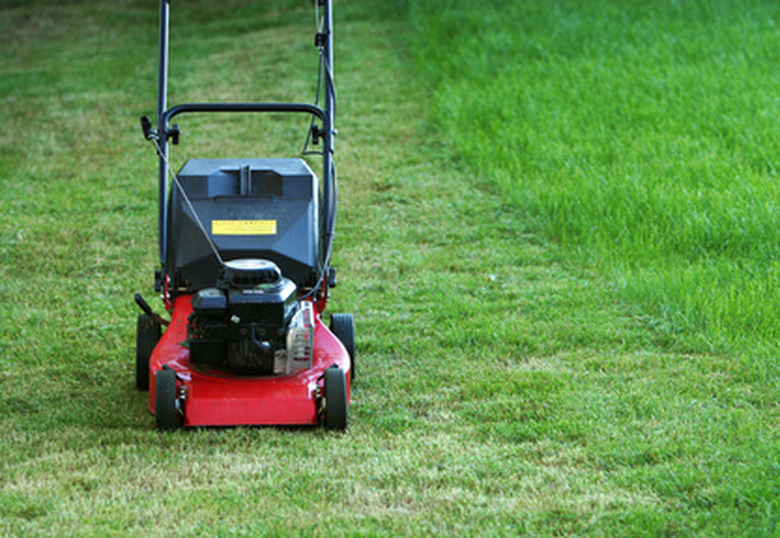How To Check Compression On A Lawn Mower Engine
Things Needed
- Crescent wrench (optional)
- Socket
- Ratchet
- Threaded compression gauge
Lawn mower engine compression is the amount of internal pressure the combustion chamber can hold. The higher the compression reading, the stronger the engine. A good compression reading will also deliver more power to the lawn mower cutting blades. Typically most small engines, for lawn mowers, will operate within a range of 80 PSI (pounds per square inch) and up to 140 PSI. This range will depend on horsepower size of the engine. A reading below 80 PSI generally indicates there is an internal leak to the combustion chamber and it must be repaired.
Step 1
Remove the rubber sparkplug wire attached to the engine's sparkplug. Generally the sparkplug is on the side of the engine that faces the push handles on a push lawn mower. On riding lawn mower models, remove both sparkplug wires for multiple cylinder engines. Consult the manufacturer's specifications for sparkplug locations.
- Lawn mower engine compression is the amount of internal pressure the combustion chamber can hold.
- Remove the rubber sparkplug wire attached to the engine's sparkplug.
Step 2
Loosen the sparkplug, using the crescent wrench or the correct size socket. Fit the crescent jaws over the metal hex head portion on the sparkplug. The socket, if used, must fit tightly over the metal hex head. Fit the ratchet handle into the socket hole. Turn the wrench or ratchet counterclockwise to loosen. Remove the sparkplug with your hands.
Step 3
Insert the threaded portion of the compression gauge into the sparkplug hole. Tighten the gauge end with your hands by turning it clockwise. In most cases, the threaded end must be hand-tight only. Be sure the small O-ring is seated tightly against the engine housing. If there is any space, a leak may occur and a false reading may be identified.
- Loosen the sparkplug, using the crescent wrench or the correct size socket.
Step 4
Hold the gauge in such a way so the dial is facing upward. Pull on the starter cord a few times. Observe the dial on the gauge. In the case of an electric start lawn mower, crank the engine a few times with the electric start. Read the gauge.
Step 5
Release the internal pressure on the compression gauge by pressing the small metal button near the threaded end of the gauge unit. Allow the air pressure to relieve itself. The gauge must read 0 PSI. Remove the gauge and test the other cylinder if applicable.
- Hold the gauge in such a way so the dial is facing upward.
- Release the internal pressure on the compression gauge by pressing the small metal button near the threaded end of the gauge unit.
Warning
Allow the small engine to cool before performing a compression test. You can burn yourself on a hot engine and damage may occur to a small O-ring mounted to the threaded nipple on the gauge. If the O-ring is damaged, a false reading may occur.
